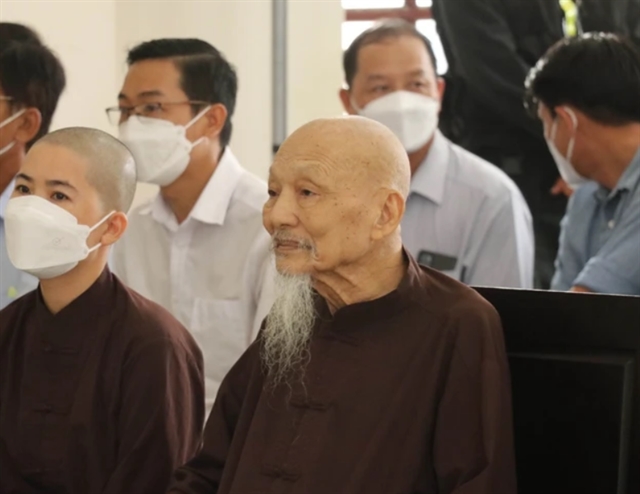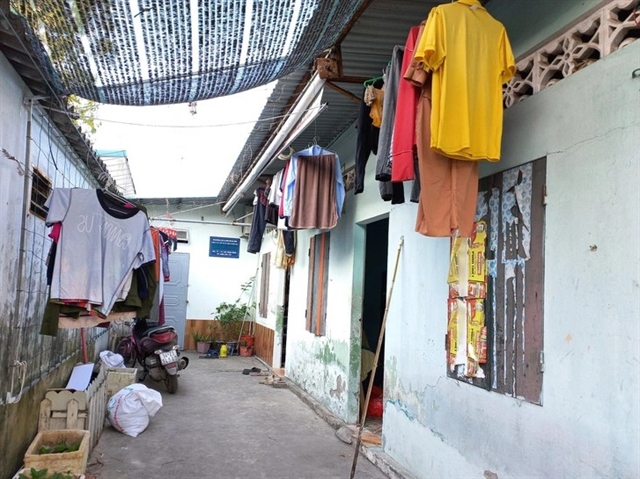 Society
Society


|
| Lê Thị Hồng Hải in the kitchen in her rented room. — Photo dantri.com.vn |
HẢI PHÒNG — Price surges coupled with post-COVID health concerns have forced many workers in Hải Phòng to tighten their belts, as they desperately wait for rent relief from the government.
Lê Thị Hồng Hải works at a company in An Dương District of Hải Phòng, while her husband is a billboard installer. Their combined monthly income equals around VNĐ15 million (US$656).
Their rented room is situated inside a narrow alleyway on Hàng Kênh Street, Lê Chân District.
Measuring 15 square metres, it has almost nothing of value, except for a refrigerator and two old motorbikes. Without any air conditioning, the room is humid and stuffy.
Hải said that it costs her VNĐ1 million (US$44) for rent each month, while electricity and water bills totalled around VNĐ500,000 (US$22).
Hải told Dân Trí e-newspaper: “We don’t install an air conditioner because it is energy-intensive. Prices are increasing nowadays and so are our living costs.
“Our salaries are not much, so we have to tighten our belts and save up to buy milk, diapers, medication, and an amount to send home for our child.”
Their two-year-old daughter is now living with her grandparents in their hometown. Hải and her husband talk to her through video calls each day, and can only return to visit her at weekends.
As a means of saving money, Hải also gets groceries each time she goes back to their hometown. Taking advantage of the area in front of her room, she also grows malabar spinach.

|
| The area outside of Hải's rented room. — Photo dantri.com.vn |
After the Lunar New Year, Hải and her husband became infected with COVID-19 and had to be off work for two weeks. Then in mid-March, her parents in law and daughter also caught the virus, and Hải had to go back home to take care of her family.
All these events put a dent in the family’s income.
They are also experiencing post-COVID symptoms – shortness of breath, chest tightness, breathing difficulties, and insomnia – but still they go to work to make ends meet.
For the past few months, Hải has started selling products online as a side job, but it is not very efficient, she said. The husband and wife are now waiting for rent support from the government.
Hải said: “We have not received the relief yet, but we feel glad, even though it is not a large amount, it is still better than nothing. It could help ease the burden for workers like us.”
Nguyễn Thị Hồng in Kiến An District, Hải Phòng is also looking forward to the rent relief.
Working in a leather shoe factory eight kilometres away from her house, Hồng makes around VNĐ7 million (US$306) per month.
Just last month, Hồng, her husband and both of their children got infected with COVID-19. Not making money as she could not go to work, Hồng also had to spend nearly VNĐ5 million (US$218) for medication and quick test kits.
To reduce the costs, her parents helped by sending them food from their hometown.
Hồng’s family spends around VNĐ1.3 million (US$57) on rent, electricity and water each month. COVID-19 has also made their income unstable.
“We don’t dare spend much except for what’s necessary to save up for our children’s education,” said Hồng.
“For many people, a relief of VNĐ1.5 million (US$65) might be small, but for us workers it is great support.
“I really look forward to the relief, but have not yet received an announcement,” Hồng added. — VNS
The Ministry of Labour, Invalids and Social Affairs estimates that around 3.4 million workers will benefit from the rent support policy, with the relief worth VNĐ6.6 trillion (US$288.6 million) in total. Labourers in industrial parks, export processing zones, and key economic areas will each receive VNĐ500,000 per month. For workers who return to the labour market, the amount is VNĐ1 million per month for each person. The relief is applicable for three months. |









